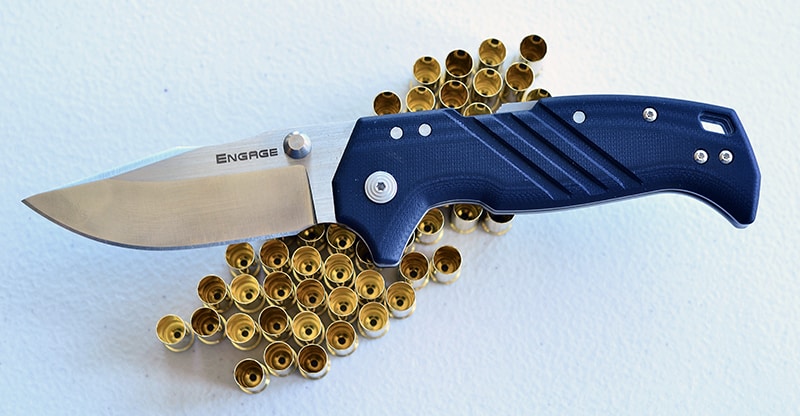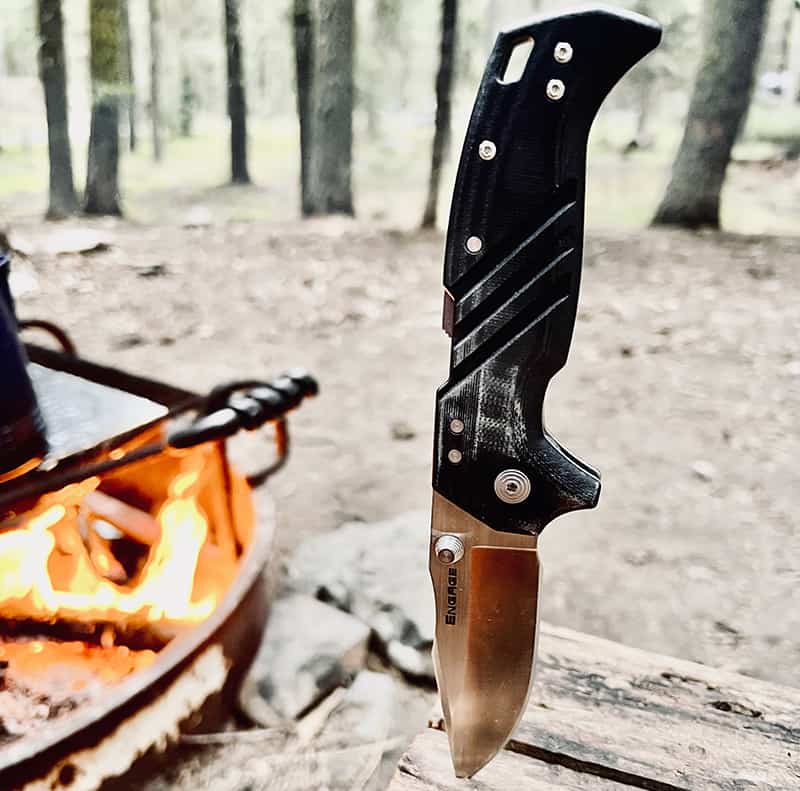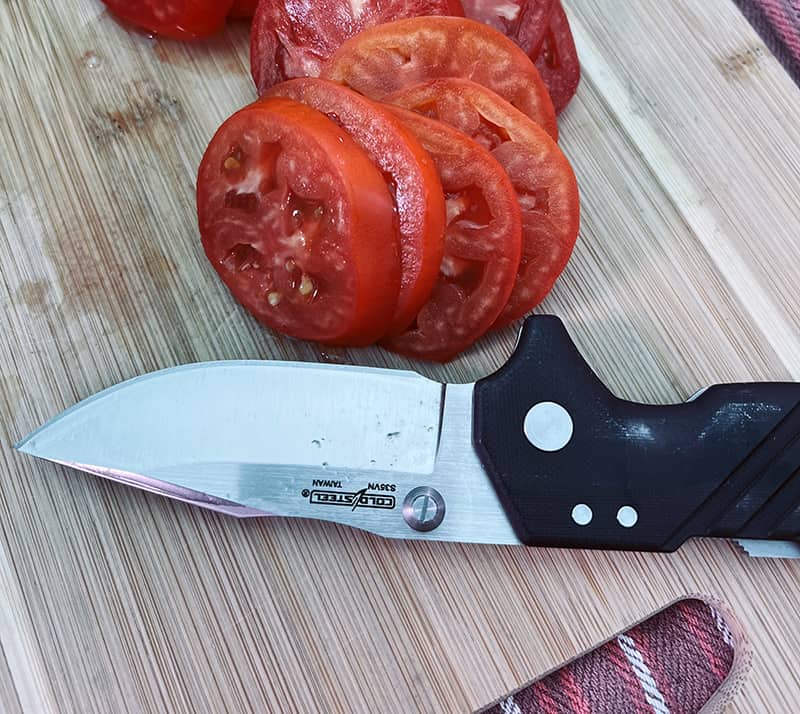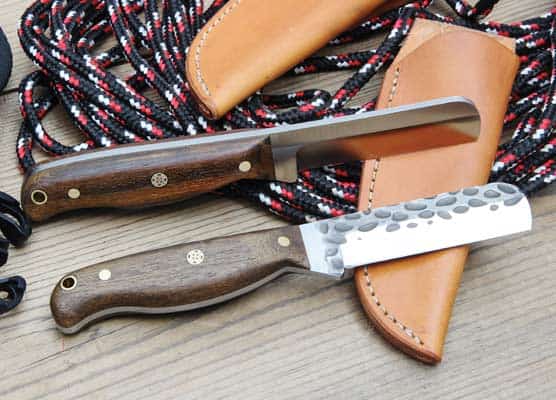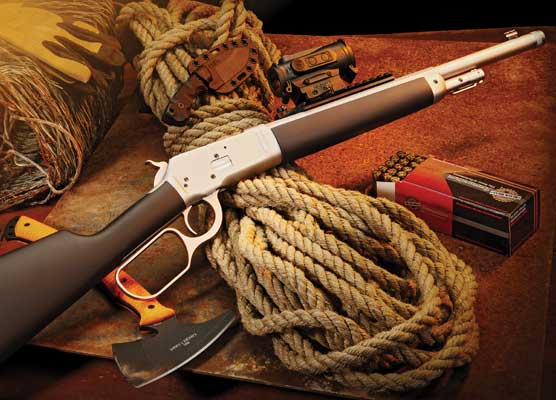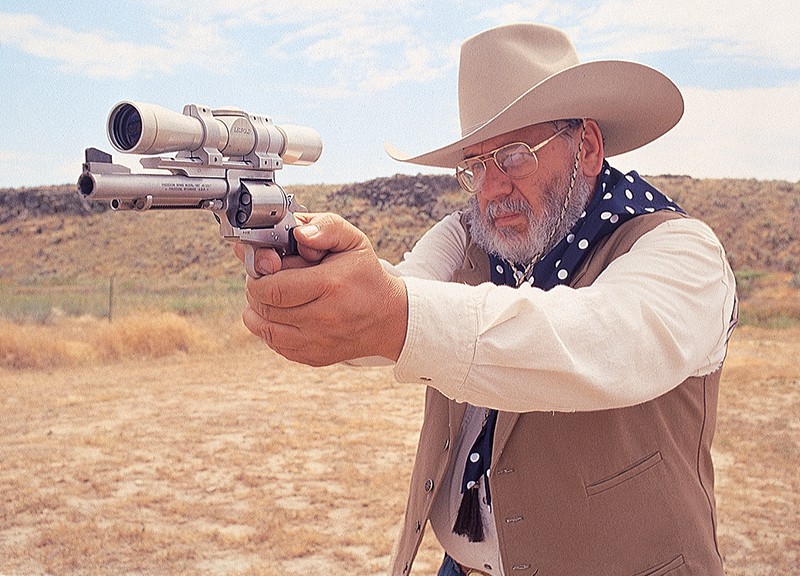Engage And Own The Outdoors
Can One Knife Handle All Outdoor Chores And More?
From The PocketTo Harvesting Dinner
I have a lot of hobbies, but one of my favorite things to do is camp out of range of a cell signal. I did something different this time. Instead of taking a huge collection, which is my habit, I brought one knife to my camp: The Cold Steel 3.5″ Engage.
There are several Cold Steel knives built under the Engage name, but the 3.5″ model (CS-FL-35DPLC) is the largest and heaviest.
For knife fans whose version of EDC is carrying a glorified letter opener in the hope the knife could be called upon to assist in peeling fruit, this is not your knife. The Engage weighs 6.6 oz., has a 3.5″ blade that is 3.8mm (0.150″) thick with heavy steel liners. It is 0.795″ thick at the pivot pin and 1.940″ wide in the pocket. Clipping this knife in the pocket is going to take up most of it. It’s nearly pry-bar thick, and the generous G10 scale’s forward contours form a comfortable finger guard with the steel liners. Even the pins on the Engage are thicker than most of my EDC knives. If they built this knife any stronger, it would be described as a pocket hatchet.
I used my Engage for camp chores: gathering kindling and fire-starting duties, cooking and setting up camp. Cold Steel has managed to keep a lot of steel in the belly of this blade, which keeps the weight forward enough to make it an excellent chopping blade. When testing, I experimented with splitting fist-sized wood pieces lengthwise, using a log to bang the blade through the wood. I haven’t made a frog spear in years, but this is the kind of knife that can go from the pocket to harvesting dinner, trumping many lesser blades.
S35VN Steel Holds An Edge
When I get back from field-testing, I examine the blade under a microscope, test the residual sharpness and inspect it for edge chipping or anomalies. My Engage post-testing inspections revealed a pristine blade that held an edge under my abuse.
The G10 scales have three diagonal-milled cuts in the grip flats and strategic contours in the grip profile. Originally, I thought checkering would have been better than the milled lines until I swung this blade to cut kindling. This knife stays in the hand without tearing it up, even when the hand is wet. Someone spent some time working with this knife in pre-production to arrive at this design.
S35VN is a steel known for toughness and edge-holding characteristics. Depending on the steel, having both characteristics sometimes means less performance in other areas, like stain resistance. S35VN has a triad of carbon, vanadium and chromium in a combination that seems to draw out the best in each.
The blade has a satin finish, and one of the first things I did was test the stain resistance. I used various acidic foods and left them on the blade for a week at a time. Just to be clear here, I have several knives that have been permanently stained by this test. The Engage did not take on a stain.
The Atlas Lock is new to me. It is a thick, spring-actuated metal bolt that engages the back of the blade in a manner similar to a deadbolt. To unlock the blade, the user presses the textured front of the bolt, which slides it toward the heel of the handle. The Axis Lock slides straight back, parallel to the spine. This isn’t a thin locking mechanism. The bolt itself is 0.175″ thick, or twice the thickness of some EDC knives — three times as thick as liner locking mechanisms.
Because the Atlas Lock’s engagement areas are between the pivot in and the stop pin, the locking mechanism contacts the strongest possible area for lockup in a manner least likely to produce any wobble. I found once the blade is locked, or rather, latched, the Engage felt and performed like a fixed-blade knife.
The Atlas locking mechanism connects and disengages smoothly. The blade swings and locks like an expensive sports car — effortlessly, without the user needing to shift the hand from the grip. Given the fact the clip can be switched to the other side for tip-up carry, this is truly an ambidextrous knife.
Over Built To Last A Lifetime
The Engage is a thumb stud, one-handed opener. It worked well, but I would have placed the stud 1mm further from the tip. This would still clear the finger guard, and accommodate for shorter thumbs. It is definitely not a knife for small hands.
I am a catch-and-release fly fisherman, so I didn’t clean any fish with my Engage. The trout, however, were biting, and I used it for all other cutting tasks, including my ribeye dinner. I would never have dreamed of using only one knife for my chores while camping, but the Engage definitely owns the outdoors.
Cold Steel is a company with a reputation of over-building and over-engineering their designs so they last a lifetime. The Engage epitomizes this philosophy as a well-designed, huge chunk of steel in a premium-quality build. It is stout, well balanced and more useful than many fixed- blade designs. MSRP is $249.99.

Visit coldsteel.com for more info.
Get More Carry Options content!
Sign up for the newsletter here:
